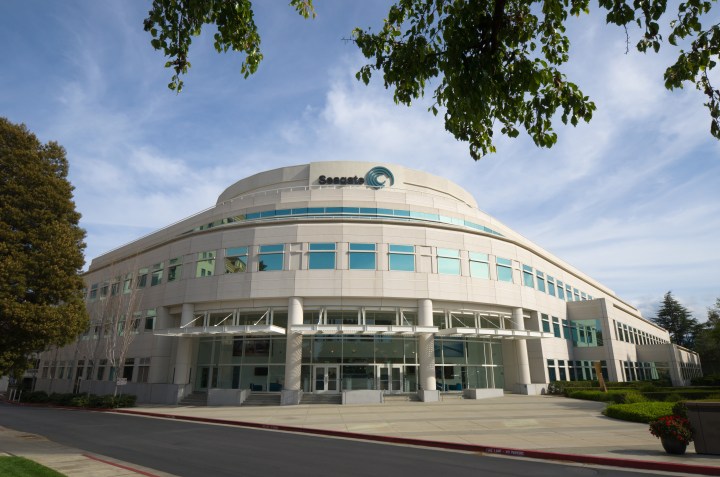
Although the company provided a press release fluffing up the benefits of these two SSD devices, AnandTech reports that Seagate is using Micron’s 3D Triple Level Cell (TLC) NAND flash in the 60TB drive. However, in order for the drive to communicate with more than a thousand dies crammed into the drive’s 3.5-inch form factor, ONFi bridge chips were installed to help the controller talk with more dies than if it were handling them all on its own.
According to the specifications, the drive has a dual port 12Gb per second SAS interface, a sequential read speed of up to 1,500MB per second, a sequential write speed of up to 1,000MB per second, and a random read IOPS of 150,000. The random write IOPS is unknown, but the drive’s peak power draw is 15 watts. That sounds plenty perfect for a data center scenario.
To put 60TB into perspective, Seagate said its SSD can store 12,000 DVD movies, or play host to 400 million photos on the typical social website. The company also said that due to the drive’s single controller architecture, it provides the lowest cost per gigabyte seen in the flash memory market of today.
“Data centers can rely on an SSD that helps address their need to quickly accommodate and ensure accessibility of ever-increasing large amounts of data without having to add additional servers or incorporate additional management steps,” the company said. “And, because of the drive’s flexible architecture, it also provides a pathway for data centers to easily grow from the current 60TB capacity to accommodate 100TB of data or more in the future — and all in the same form factor.”
As for the 8TB Nytro XP7200 NVMe SSD, it connects to a PCIe 3 x16 slot on the motherboard, consuming 26 watts of power during writing and reading. The specs show a sequential read speed of up to 10,000MB per second, a sequential write speed of up to 3,600MB per second, a random read IOPS of 940,000, and a random write IOPS of 160,000. There is also a 4TB model on the way.
“It features a single PCIe interface for high-speed data transfers and four separate controllers, providing processing power up to four times faster than comparable drives, but without the higher cost, power levels and latency required from a PCIe switch or bridge,” Seagate added. “Applications can process more transactions faster using the industry’s highest bandwidth through one PCIe slot, and without having to invest in more hardware.”
In addition to the two SSDs explored here, Seagate is also currently showcasing other enterprise-focused products at the convention like the Nytro 1230 SATA SSD, the Nytro 7102 PCIe AIC, and the 2TB Nytro XM1440 M.2 drive.


